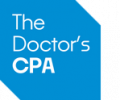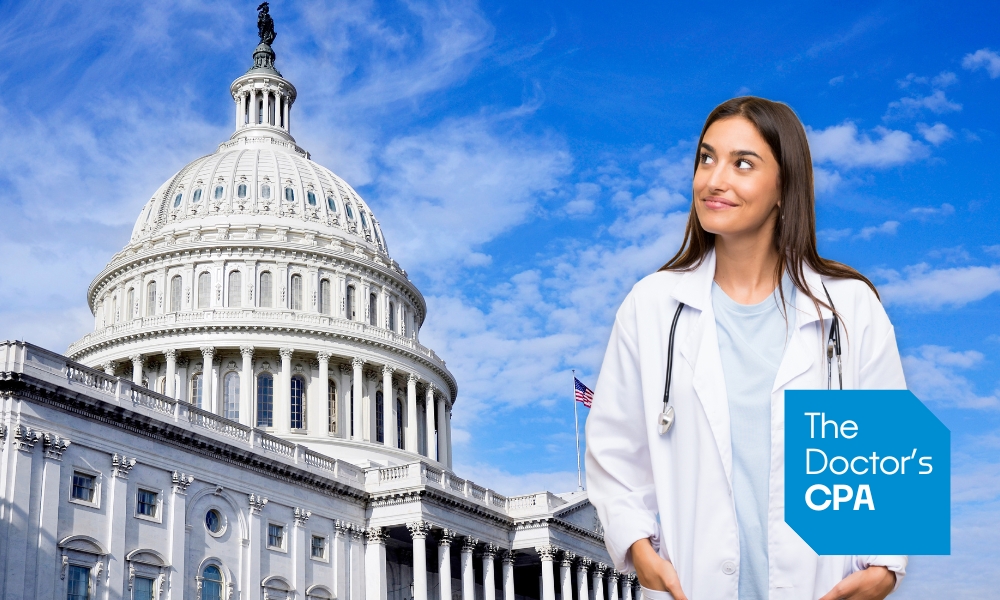The One Big Beautiful Bill Act (OBBBA), enacted in July 2025, introduces sweeping tax and benefit changes that significantly affect 1099 locum tenens providers.
From expanded deductions and bonus depreciation to new savings accounts and compliance relief, this law creates significant opportunities and tax benefits for locum doctors.
Below, we break down the 10 most important “Big Beautiful Bill” effects for clinicians, with practical guidance on how to make the most of them.
1. Section 199A QBI Deduction Increased to 23%
Starting in 2026, the Qualified Business Income (QBI) deduction increases from 20% to 23% for eligible self-employed professionals. Since W-2 income doesn’t qualify for this deduction, 1099 earnings become even more favorable.
Action Tip: If you’re balancing both W-2 and 1099 roles, reassess your structure. Under the new rules, focusing on 1099 income may yield more advantageous after-tax results.
2. 100% Bonus Depreciation and Higher Section 179 Expensing Limits
The Act reinstates 100% bonus depreciation for qualified property placed in service between January 1, 2025, and December 31, 2029, and increases Section 179 expensing to $1.5 million.
This means you can fully deduct major business purchases, such as vehicles, computers, software, and medical equipment, that are not available to W-2 employees.
Action Tip: Time any significant business-related purchases, especially equipment and technology, to align with this window and reduce taxable income.
3. Retirement Enhancements + Introduction of “MAGA Accounts”
The Act retains all existing retirement plan structures (SEP IRAs, solo 401(k)s, and defined benefit plans), which are especially beneficial for 1099 professionals. In addition, the law introduces so-called MAGA (Money Accounts for Growth and Advancement) accounts as follows:
- Employers may contribute up to $5,000 per child, annually
- Contributions are FICA-exempt
- These are not deductible for federal income tax purposes
Action Tip: Review available self-employed retirement accounts. If you qualify as an employer through your locums agency, these contributions can complement your overall benefits and tax strategy.
4. PTET Workaround for SALT Deduction Limitations
The $10,000 cap on state and local tax (SALT) deductions imposed by the 2017 Tax Cuts and Jobs Act (TCJA) remains in place. However, Pass-Through Entity Tax (PTET) regimes, now expanded, allow you to bypass this cap when operating through an S-corp or similar entity.
Example: If your S-corp pays $30,000 in state taxes:
- W-2 or individual payment: $10,000 deduction cap applies
- Entity payment via PTET: Full $30,000 deductible at the federal level
Important Caveat: After OBBBA, Specified Service Trades or Businesses (SSTBs) such as law and accounting are excluded from PTET at the federal level. Physicians are not currently classified as SSTBs in this context.
Action Tip: Check whether your state offers PTET and confirm proper election and entity setup. PTET continues to provide a powerful deduction strategy.
View current PTET-enacted states here.
5. Expanded HSA Eligibility and Contribution Limits
The OBBBA makes several essential updates to Health Savings Accounts (HSAs):
- Individuals enrolled in Medicare Part A can now contribute, provided they are also covered by a high-deductible health plan (HDHP)
- Contribution limits rise:
- +$4,300 for individuals earning under $75,000
- +$8,550 for families earning under $150,000
(with phaseouts starting at $100,000 and $200,000, respectively)
Action Tip: If you operate through an entity, such as an LLC or S-corp, employer HSA contributions can be deductible and FICA-exempt, offering both healthcare savings and tax benefits.
6. Student Loan Reforms + Employer Contribution Benefits
Significant changes are coming to federal student loan repayment, including:
- Elimination of current IDR plans (PAYE, ICR, SAVE)
- Two new options:
- Standard Plan (10–25 years)
- Repayment Assistance Plan (RAP): 1% to 10% of gross income with forgiveness after 30 years
Starting in 2027, employers (including S-corps) can contribute up to $5,250 per employee per year for student loan repayment, combined with educational assistance. These payments are tax-deductible and FICA-free.
Action Tip: Structure employer loan repayment contributions through your business to optimize tax treatment while supporting yourself or your team.
7. Permanent ABLE-to-Work Provision
ABLE (Achieving a Better Life Experience) accounts receive a permanent expansion, helping individuals with disabilities contribute more to tax-advantaged savings.
For 2025:
- Total contribution limit may reach $33,000
- Employer contributions (up to $18,000) can be FICA-exempt and deductible if included in a qualified fringe benefit plan
Action Tip: If you or any employees qualify, consider leveraging ABLE contributions through your business to create additional tax benefits.
8. Expanded 529 Education Savings Benefits
A state or educational institution operates a plan designed to facilitate saving for college and other post-secondary education, or for elementary or secondary school tuition. This plan offers tax advantages and potential incentives for a designated beneficiary, such as a child or grandchild.
Beginning in 2026, 529 plan updates include:
- Raising the K–12 tuition limit from $10,000 to $20,000
- Adding homeschooling and postsecondary certifications to qualified expenses
- Allowing employer contributions (deductible in most cases)
Some states offer additional credits:
- Colorado: 20% (up to $500 per employee/year)
- Illinois: 25% (up to $500)
- Nebraska: 25% (up to $2,000)
Action Tip: Use 529 contributions to enhance benefits for your family or employees, especially if your state offers tax incentives.
9. Higher Childcare and Dependent Care Credits
The Child and Dependent Care Tax Credit becomes significantly more generous:
- 50% of eligible expenses are now deductible
- Max credit:
- $10,000 for one dependent
- $20,000 for two or more
For business owners, Dependent Care Assistance Programs (DCAPs) can be funded by your entity and structured as a FICA-free business deduction.
Action Tip: Set up DCAPs for yourself or employees to reduce tax liability and enhance overall benefits.
10. Simplified Compliance and IRS Protections
The Act aims to streamline compliance and reduce audit stress for small businesses and 1099 locum tenens providers.
Notable provisions:
- Simplified 1099-specific filing forms and schedules
- IRS “Good Faith Compliance” clause waives penalties for first-time reporting errors if corrected promptly
- A dedicated IRS support hotline for small business owners
Action Tip: Make sure your systems align with new compliance expectations and work with a CPA who understands physician-focused tax strategies.
Steps to Take Now
These legislative updates present a unique opportunity for independent clinicians to establish more robust financial systems.
Here’s how to start:
- Consult a financial expert: Tailored advice can help you take full advantage of the OBBBA.
- Update your accounting and payroll systems to comply with depreciation, PTET, and new benefits structures.
- Time capital purchases strategically to leverage bonus depreciation.
- Review your entity status and ensure you’re maximizing available deductions and employer-based contributions.
Final Thoughts
This major legislation represents one of the most substantial overhauls of tax and benefit provisions in recent memory. For 1099 locum tenens professionals, it unlocks a range of financial strategies, including higher deductions and more innovative savings plans.
At The Doctor’s CPA, we specialize in helping medical professionals like you align with complex tax laws, set up compliant entities, and capture every possible deduction.
Let’s optimize your structure. Schedule a consultation today to take full advantage of these Big Beautiful Bill effects and set yourself up for a stronger financial future.


